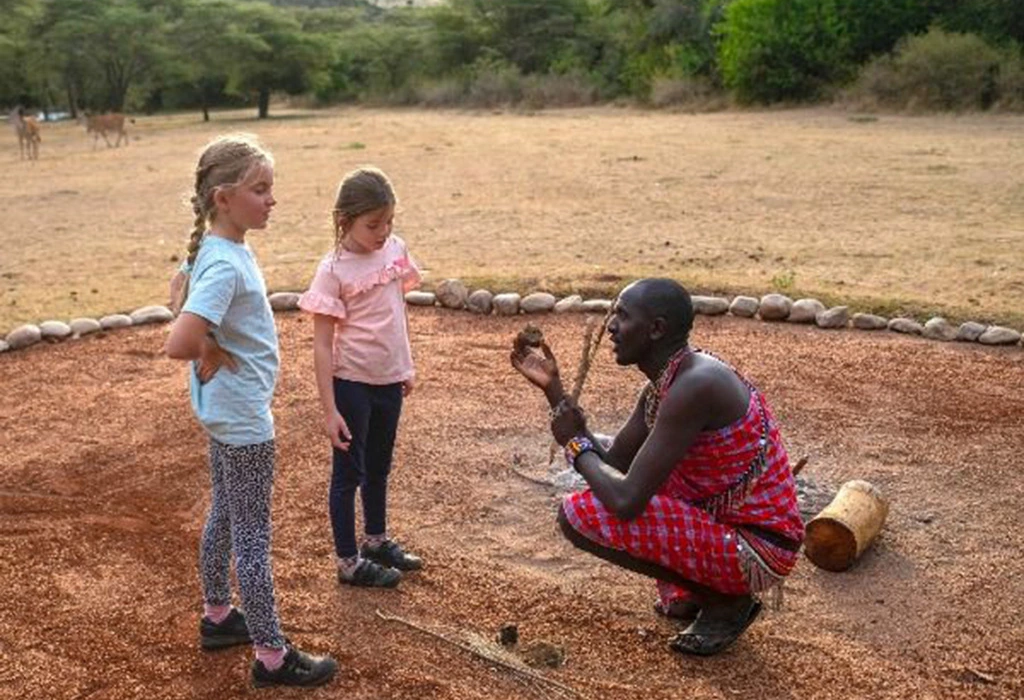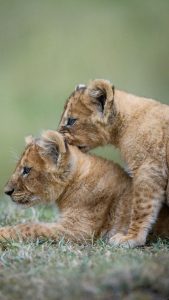An East African safari is one of the most exciting and educational adventures a child can experience. From watching elephants roam the plains of Amboseli to witnessing lions on the hunt in the Serengeti or encountering giraffes in Lake Mburo, the magic of East Africa leaves a lasting impression. However, for parents, one important question often arises: how do I prepare my kids for an East African safari?
Preparation is the key to a safe, enjoyable, and memorable safari with children. It goes beyond packing clothes or arranging flights it includes setting expectations, understanding the region, adjusting to the environment, and equipping kids with knowledge and tools to appreciate and respect wildlife and cultures.
In this guide, we’ll walk you through everything you need to know to prepare your children—mentally, physically, and emotionally for a once-in-a-lifetime journey to East Africa.
Why Is Preparation Important for a Safari with Kids?
Before diving into specifics, it’s important to understand why preparation is critical when bringing kids on safari. A well-prepared child is more likely to enjoy the experience, stay safe, and return home with wonderful memories instead of discomfort or stress.
Here are some key reasons why you should prepare thoroughly:
-
Wildlife encounters require silence and patience
-
The African environment may include heat, insects, long drives, and unfamiliar foods
-
Cultural sensitivity is essential
-
Understanding conservation helps kids value the experience more
-
Health precautions must be addressed in advance
Now let’s explore the key steps you can take to get your child safari-ready.
How Can I Spark My Child’s Interest in Wildlife and Africa?
Children are naturally curious, and building anticipation for the safari can make the trip more enjoyable and meaningful. Begin the journey before departure by introducing them to the wonders of African wildlife and landscapes.
1. Watch Wildlife Documentaries Together
Choose age-appropriate nature documentaries focusing on East African animals. Programs about the Serengeti, Maasai Mara, or Uganda’s national parks can help kids become familiar with the animals they may see.
2. Read Books About African Animals and Cultures
From picture books to early chapter books, there are plenty of stories that celebrate African wildlife and communities. Reading together can open discussions about behavior, conservation, and respect for other cultures.
3. Use Maps and Globes
Show your child where you’re going. Use a map to explain where East Africa is in relation to your home country. Let them trace your travel route, highlighting countries like Kenya, Tanzania, Uganda, or Rwanda.
4. Learn Local Words and Phrases
Introducing children to basic words in Swahili or Luganda can be fun and empowering. Words like “safari” (journey), “simba” (lion), or “asante” (thank you) can enrich their experience and interaction with locals.
How Do I Involve Kids in Planning the Safari?
Children feel more engaged when they are part of the planning process. Here’s how you can include them in simple, age-appropriate ways:
-
Let them choose activities like a boat safari, cultural visit, or night drive from a curated list.
-
Create a packing checklist together to make packing fun and educational.
-
Give them a safari journal or notebook to write down what they are excited about seeing.
-
Encourage them to ask questions about the animals or places they are visiting.
What Should I Pack for a Child Going on Safari?
Packing for a safari with children requires thoughtfulness and balance—bring what they need without overpacking. Here’s a safari-ready checklist focused on functionality, comfort, and fun:
Clothing Essentials
-
Lightweight, neutral-colored clothing (long sleeves and pants for sun and mosquito protection)
-
A wide-brimmed hat
-
Comfortable walking shoes
-
Warm layers for cool mornings and evenings
-
A waterproof jacket in case of rain
Safari Gear
-
Child-sized binoculars
-
Flashlight or headlamp
-
Safari journal and pens
-
Animal spotting checklist
-
Books or small toys for downtime
Health and Hygiene
-
Insect repellent (child-safe)
-
Sunscreen (high SPF)
-
First-aid kit
-
Hand sanitizer and wet wipes
-
Rehydration salts (just in case)
Food and Comfort
-
Snacks for game drives
-
A reusable water bottle
-
Travel pillow and blanket
-
Personal items that offer comfort (a favorite toy or stuffed animal)
What Health Precautions Should I Take for My Child?
Health is one of the most important aspects of safari preparation, especially in East Africa where tropical diseases like malaria can be present.
1. Visit a Travel Clinic Early
Consult your pediatrician or a travel health clinic at least 6–8 weeks before travel. They’ll advise on necessary vaccinations, medications, and general precautions.
2. Malaria Prevention
Many areas in East Africa are malarial zones. Ensure your child takes malaria prophylaxis as prescribed. Use insect repellent, dress them in long clothing during dusk and dawn, and sleep under mosquito nets.
3. Pack a Personal Medical Kit
Include child-safe pain relief, antihistamines, band-aids, and any medications your child takes regularly. Diarrhea medicine and hydration powders are also recommended.
4. Prepare for the Environment
Ensure your child stays hydrated, wears sunscreen, and rests adequately. East Africa’s sun can be strong, and game drives can be tiring.
How Do I Prepare Kids Emotionally and Mentally for a Safari?
An East African safari can be overwhelming for young minds—emotionally intense wildlife sightings, cultural differences, and unfamiliar environments. Prepare children by:
1. Setting Realistic Expectations
Explain that wild animals are not always easy to spot, and game drives may take time. Teach them patience and the value of observing nature, even when the action is slow.
2. Practicing Quiet Observation
Many safaris require silence during sightings. Practice whispering or using hand signals before the trip to help them understand the importance of quiet behavior.
3. Talking About Animal Behavior and Safety
Help children understand the difference between zoo animals and wild animals. Explain safety rules like staying inside the vehicle, never running, and listening to guides.
4. Introducing Cultural Respect
Talk about the people they may meet—rangers, guides, and local communities. Teach them about greeting customs and being respectful of differences.
What Should I Teach My Kids About Conservation?
Safaris are powerful tools to raise the next generation of conservationists. Take time to discuss:
-
Why national parks exist
-
How animals and humans share the land
-
The dangers of poaching and habitat loss
-
Ways they can help, even from home
Let your child ask questions and express emotions. Seeing an elephant in the wild can spark deep compassion, and it’s a wonderful opportunity to teach responsibility for the planet.
What Should I Expect During the Safari with My Child?
Even the best-prepared families encounter surprises on safari. Understanding what to expect can help you respond calmly and keep your child happy and safe.
Game Drives
These often start early and may last 2–4 hours. Some reserves allow flexible, shorter drives for families. Bring snacks, water, and entertainment for longer drives.
Accommodations
Family-friendly lodges or tented camps usually offer safety features like enclosed grounds and guided walks. Some even provide educational programs for children.
Meals
Most safari lodges offer child-friendly menus if requested in advance. However, bring familiar snacks from home just in case.
Downtime
Build in time for rest, swimming, or games at the lodge. Too many back-to-back drives can lead to exhaustion or irritability.
What If My Child Gets Bored or Anxious?
It’s completely normal for children to feel overwhelmed, tired, or disinterested at times. Here’s how to keep things positive:
-
Use games like “I Spy” or “animal bingo” during drives
-
Let them take photos or use a wildlife checklist
-
Take breaks when needed—this is not a race
-
Celebrate small moments, even seeing a zebra or sunset can be magical
How Do I Keep the Experience Memorable After the Safari?
Once you’re home, help your child reflect on the trip and treasure the memories.
-
Print their photos and make a scrapbook
-
Write stories or poems about what they saw
-
Share memories with friends or classmates
-
Encourage them to keep learning about African wildlife
Preparing Kids for an East African Safari Is a Journey in Itself
An East African safari is a breathtaking experience for both adults and children. However, for kids to get the most out of it, preparation is essential. By introducing them to the environment, involving them in planning, ensuring their health and safety, and nurturing respect for wildlife and local cultures, you lay the foundation for a journey that is not only enjoyable but deeply meaningful.
Every child is different. Some may take to the wild with ease, while others may need extra time and support. But with thoughtful preparation, your child can grow more curious, compassionate, and adventurous than ever before.
So, take the time. Teach them about the land they’ll explore, the animals they’ll admire, and the people they’ll meet. When done right, a safari can open a child’s heart and mind in ways no classroom ever could.
The wild is waiting make sure your little explorer is ready.




